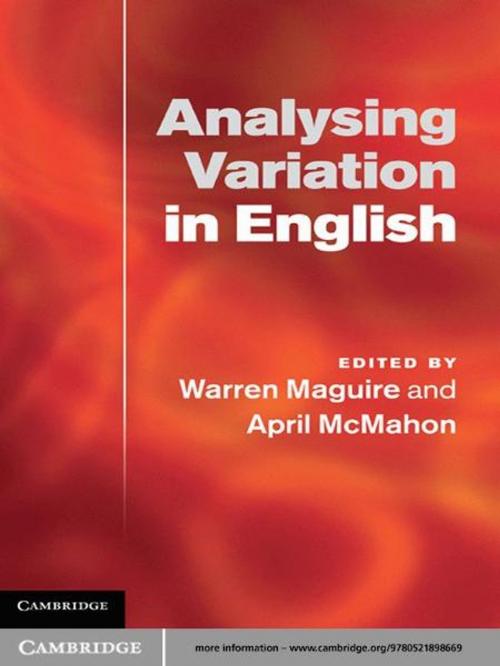| Author: | ISBN: | 9781139012522 | |
| Publisher: | Cambridge University Press | Publication: | February 3, 2011 |
| Imprint: | Cambridge University Press | Language: | English |
| Author: | |
| ISBN: | 9781139012522 |
| Publisher: | Cambridge University Press |
| Publication: | February 3, 2011 |
| Imprint: | Cambridge University Press |
| Language: | English |
Analysing Variation in English brings together a range of perspectives on the collection, analysis and broader relevance of variable language data. In the first half of the book, the focus is firmly on the description and comparison of methods for collecting and analysing examples of variation in language. Novel quantitative and computational methods are introduced and exemplified alongside more traditional approaches. The innovative second half of the book establishes and tests the relevance of language variation to other aspects of linguistics such as language change, and to other disciplines such as law and education. Each chapter concludes with a 'Where next?' section, providing guidance on further reading, but also pointers to under-researched areas, designed to help identify good topics for projects and dissertations. Designed to be used by students as well as researchers, the book will be welcomed by those working in English language and linguistics, sociolinguistics or language change.
Analysing Variation in English brings together a range of perspectives on the collection, analysis and broader relevance of variable language data. In the first half of the book, the focus is firmly on the description and comparison of methods for collecting and analysing examples of variation in language. Novel quantitative and computational methods are introduced and exemplified alongside more traditional approaches. The innovative second half of the book establishes and tests the relevance of language variation to other aspects of linguistics such as language change, and to other disciplines such as law and education. Each chapter concludes with a 'Where next?' section, providing guidance on further reading, but also pointers to under-researched areas, designed to help identify good topics for projects and dissertations. Designed to be used by students as well as researchers, the book will be welcomed by those working in English language and linguistics, sociolinguistics or language change.















